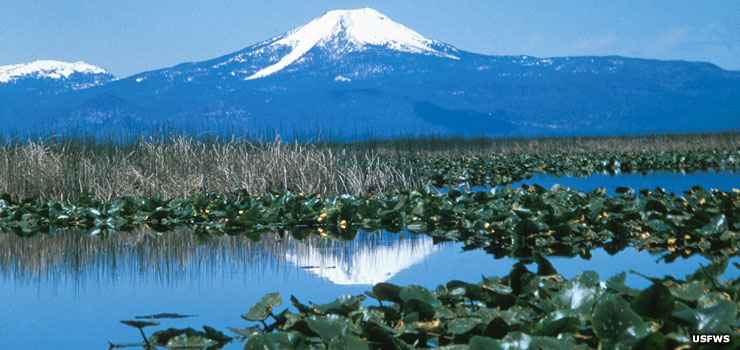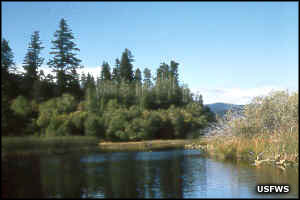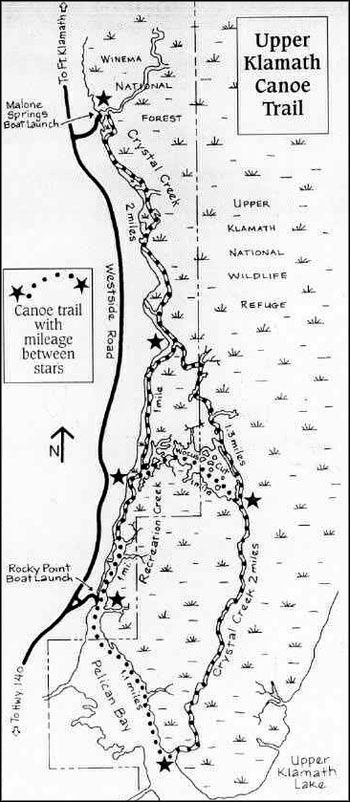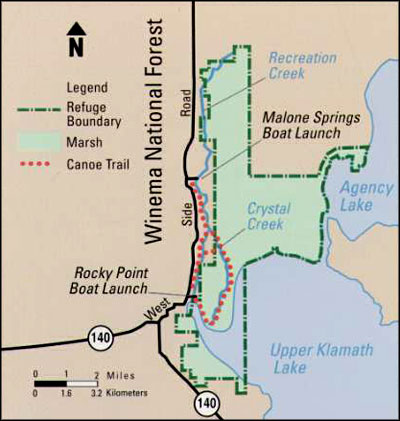Upper Klamath National Wildlife Refuge

Upper Klamath National Wildlife Refuge

Established in 1928, Upper Klamath National Wildlife Refuge is composed of some 14,400 acres of naturally occurring bulrush-cattail marsh and open water along the edge of Upper Klamath Lake. The refuge also includes about 30 acres of forested uplands. The area is a beautiful and dramatic mix of forest, marsh and open lake, a rich habitat for many animal and plant species.

Canoe trails in the refuge
The habitats are used by waterfowl and colonial nesting birds like herons and American white pelicans. There are also osprey and bald eagle in the area, often seen fishing in refuge waters. The refuge also sees significant numbers of Canada geese, western and eared grebes, black terns, great and snowy egrets and pintail, gadwall, mallard and canvasback ducks.
Most folks access Upper Klamath National Wildlife Refuge via the boat launches at Rocky Point or Malone Springs. Both are stopping points along the 9.5-mile self-guided canoe tour that meanders through the marshlands on the southwest side of Upper Klamath Lake. Canoes are available for rent year round near the Rocky Point boat launch. When canoeing on the refuge, stay on the marked trail as most areas of the marsh are closed to protect nesting birds. While canoeing, you are also liable to come across evidence of the many river otters, muskrats and beavers who call the marsh area home.
Under Oregon State regulations, fishing is allowed year round in the deep-water sections of Upper Klamath National Wildlife Refuge, but air boats and jet boats are not allowed. When fishing you need to be careful of snagging a Lost River sucker or a Short-nosed sucker, both are on the endangered species list and are off-limits.
About 6,000 acres of the refuge is open to waterfowl hunting during the normal State season. This area includes Hanks Marsh on the southern end of Upper Klamath Lake and the southern, eastern and northern sections of Upper Klamath Marsh. You'll need to have a Federal Duck Stamp on you when go hunting, too.
To get there: Go west from Klamath Falls on Highway 140 to Rocky Point Junction, about 25 miles. Then go north about 2 miles to the Rocky Point boat launch of go another 3.5 miles north to the Malone Springs boat launch. The refuge headquarters is in Tuleleake, CA; there is usually no staff at Upper Klamath.
